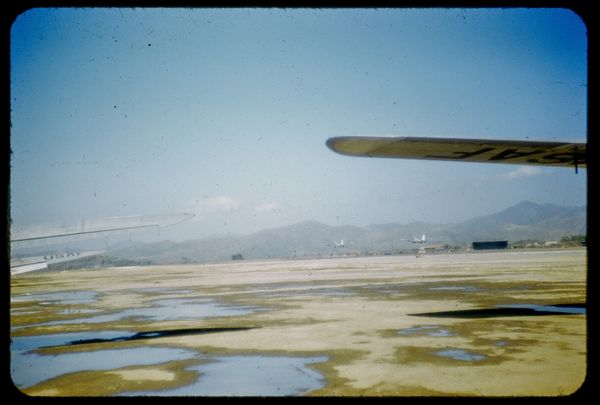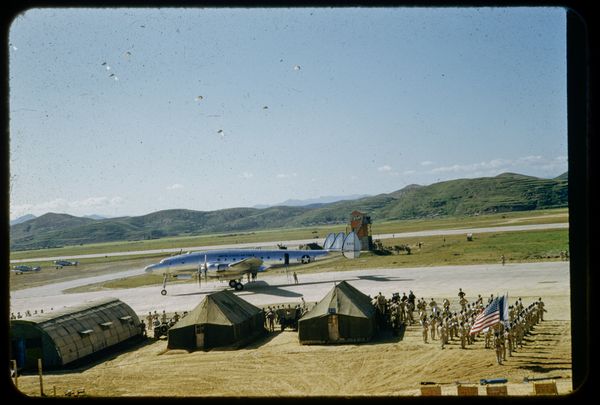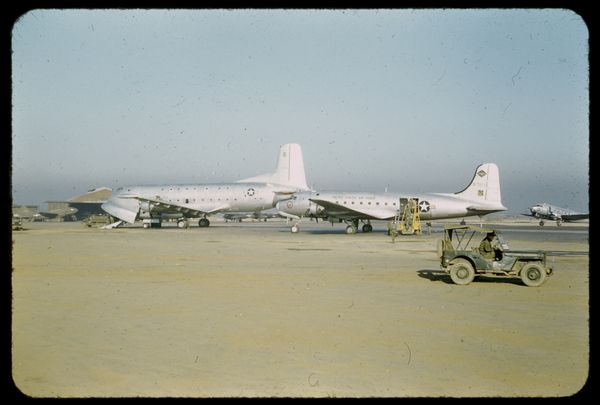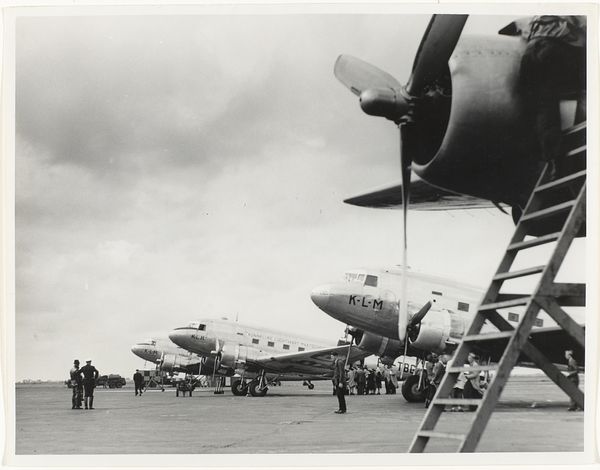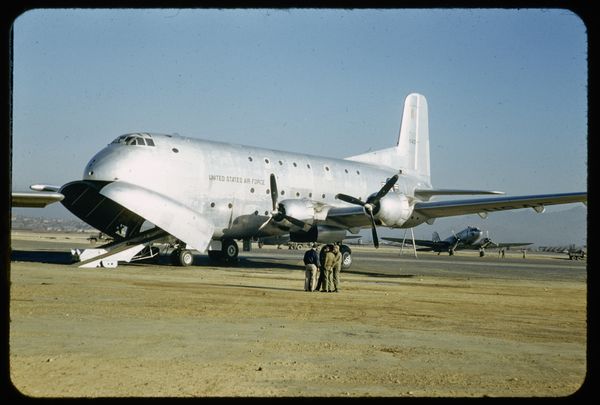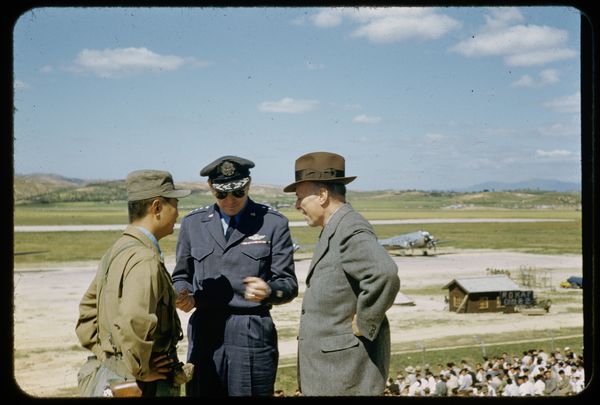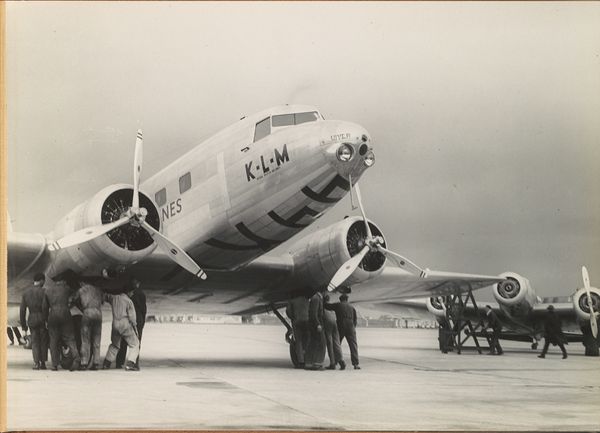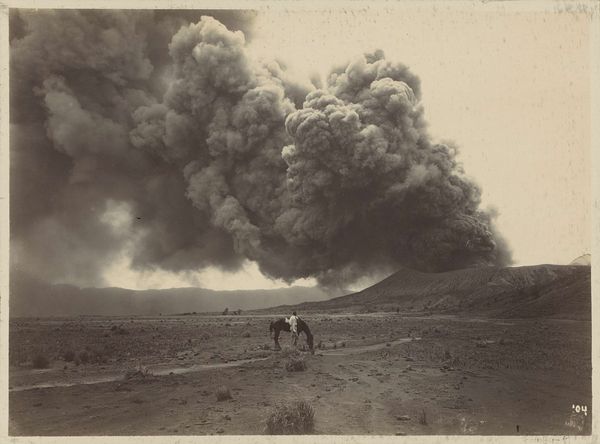
c-print, photography
#
landscape
#
c-print
#
photography
#
photojournalism
#
history-painting
#
modernism
Dimensions: height 5 cm, width 5 cm
Copyright: Rijks Museum: Open Domain
Editor: This photograph, titled "Luchtgevecht bij Sa-Chon," meaning "Air Combat at Sa-Chon," was captured by David Ketel sometime between 1952 and 1959. It's a C-print, giving it these vibrant, almost unnerving colors. There’s something quite staged about the whole scene... a real tension between documentary and spectacle. What catches your eye? Curator: Immediately, the layered nature of this image strikes me. We have this performance of war playing out, witnessed by what looks like a formal assembly in the foreground, complete with flags. The camera is placed amongst photographers who document what they are supposed to document. It’s as though the photo reveals not only the "air combat" itself, but the orchestrated spectacle of it. Editor: So, you're saying it's not just about capturing the event, but the performance surrounding it? Curator: Exactly. Consider the date—mid to late 1950s. This photograph emerges from a period defined by the Cold War, where image making and distribution become potent tools in shaping public opinion. This wasn’t just about recording a battle; it was about constructing a narrative, solidifying specific ideas about the war, freedom, power. What sort of audience do you imagine this picture aiming toward? Editor: It feels designed for public consumption, maybe to stir up patriotism. But seeing photographers included *in* the image complicates that message for me... as if to question the constructed reality. Curator: Precisely! Ketel doesn't present an unbiased record. Instead, he unveils the apparatus through which these historical narratives are constructed. This forces the viewer to think critically about the role images play in shaping our understanding of conflict and how media outlets convey government ideologies. Editor: I hadn't considered how self-aware it seemed, playing with the idea of photojournalism. Thanks, that’s a fascinating insight. Curator: It highlights the active role photography plays in the history it portrays, demonstrating its impact beyond a simple retelling of historical events.
Comments
No comments
Be the first to comment and join the conversation on the ultimate creative platform.



